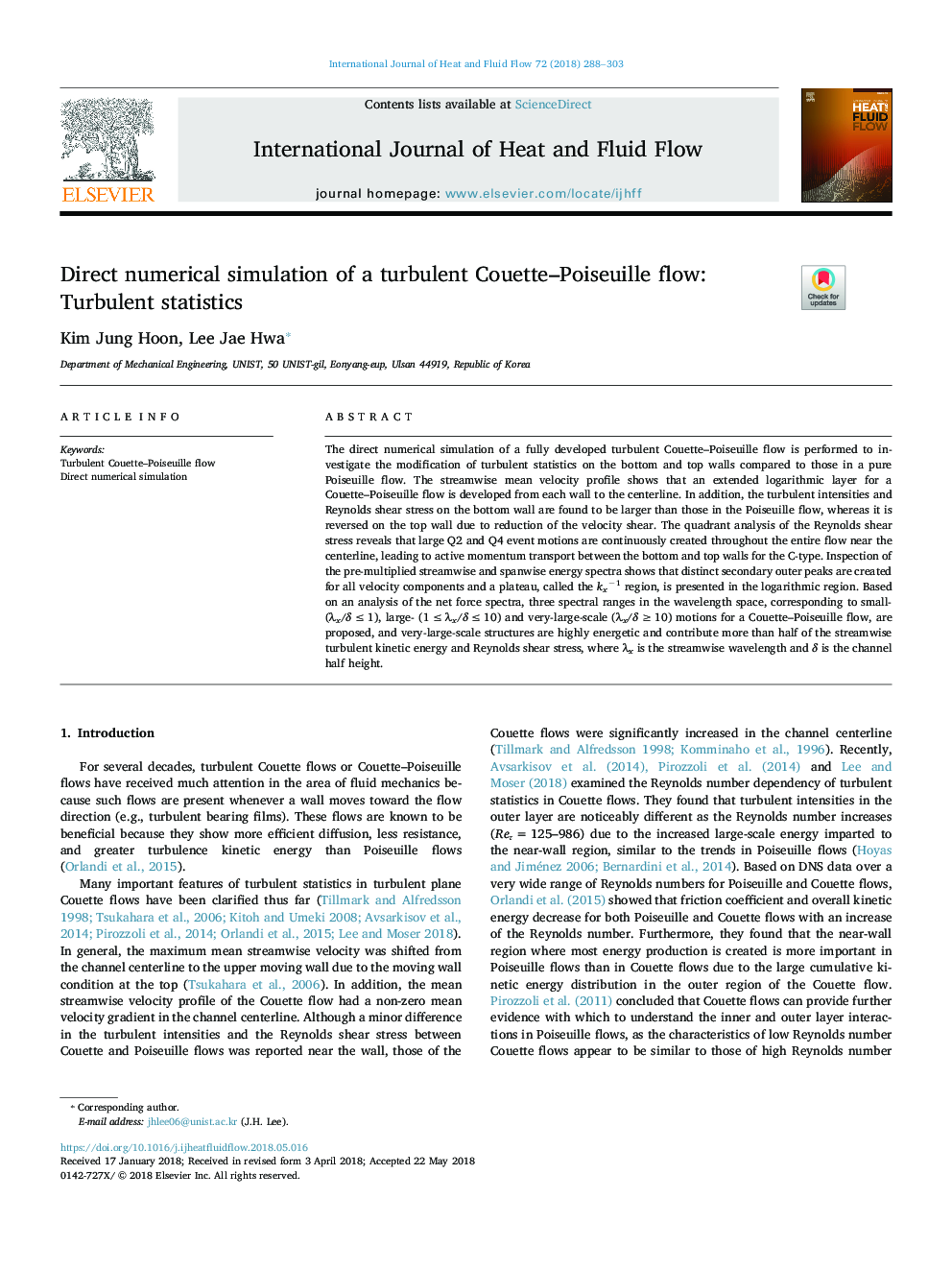| Article ID | Journal | Published Year | Pages | File Type |
|---|---|---|---|---|
| 7053435 | International Journal of Heat and Fluid Flow | 2018 | 16 Pages |
Abstract
The direct numerical simulation of a fully developed turbulent Couette-Poiseuille flow is performed to investigate the modification of turbulent statistics on the bottom and top walls compared to those in a pure Poiseuille flow. The streamwise mean velocity profile shows that an extended logarithmic layer for a Couette-Poiseuille flow is developed from each wall to the centerline. In addition, the turbulent intensities and Reynolds shear stress on the bottom wall are found to be larger than those in the Poiseuille flow, whereas it is reversed on the top wall due to reduction of the velocity shear. The quadrant analysis of the Reynolds shear stress reveals that large Q2 and Q4 event motions are continuously created throughout the entire flow near the centerline, leading to active momentum transport between the bottom and top walls for the C-type. Inspection of the pre-multiplied streamwise and spanwise energy spectra shows that distinct secondary outer peaks are created for all velocity components and a plateau, called the kxâ1 region, is presented in the logarithmic region. Based on an analysis of the net force spectra, three spectral ranges in the wavelength space, corresponding to small- (λx/δâ¯â¤â¯1), large- (1â¯â¤â¯Î»x/δâ¯â¤â¯10) and very-large-scale (λx/δâ¯â¥â¯10) motions for a Couette-Poiseuille flow, are proposed, and very-large-scale structures are highly energetic and contribute more than half of the streamwise turbulent kinetic energy and Reynolds shear stress, where λx is the streamwise wavelength and δ is the channel half height.
Keywords
Related Topics
Physical Sciences and Engineering
Chemical Engineering
Fluid Flow and Transfer Processes
Authors
Kim Jung Hoon, Lee Jae Hwa,
